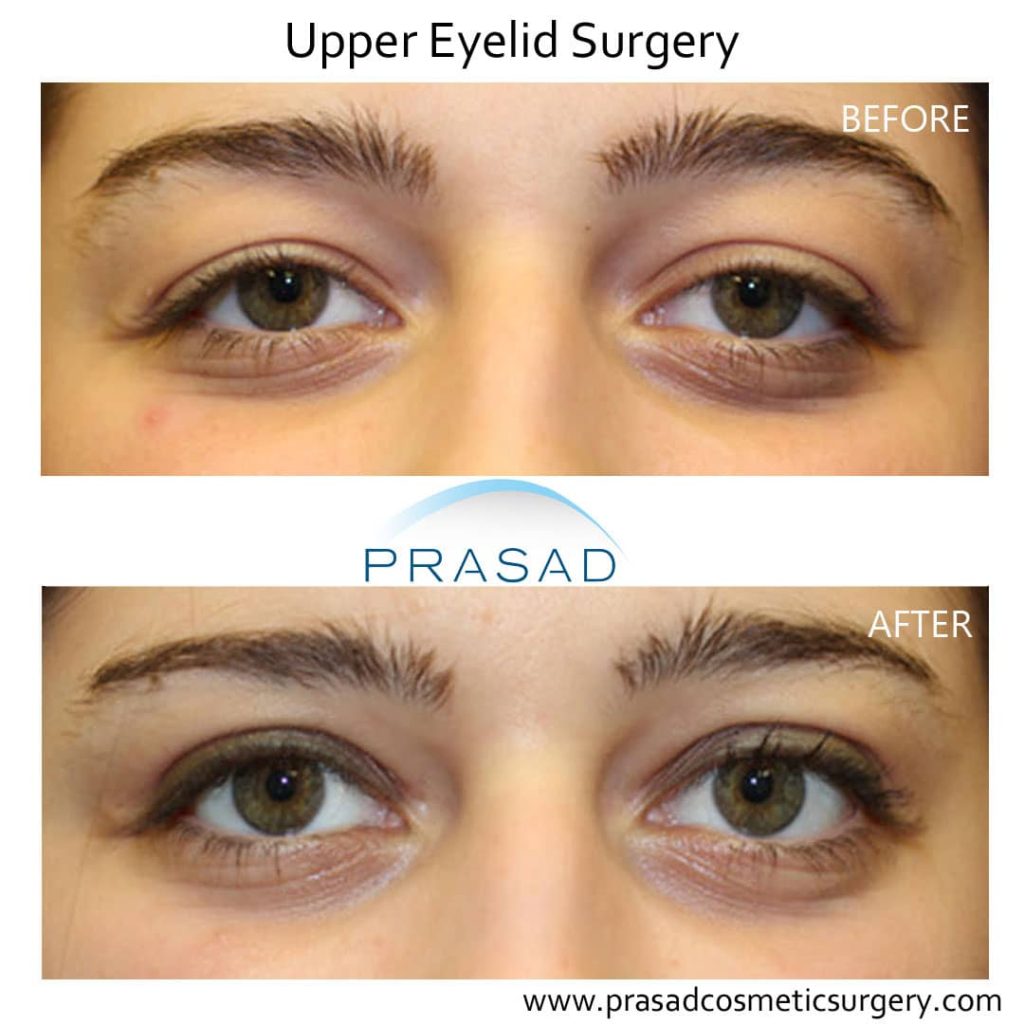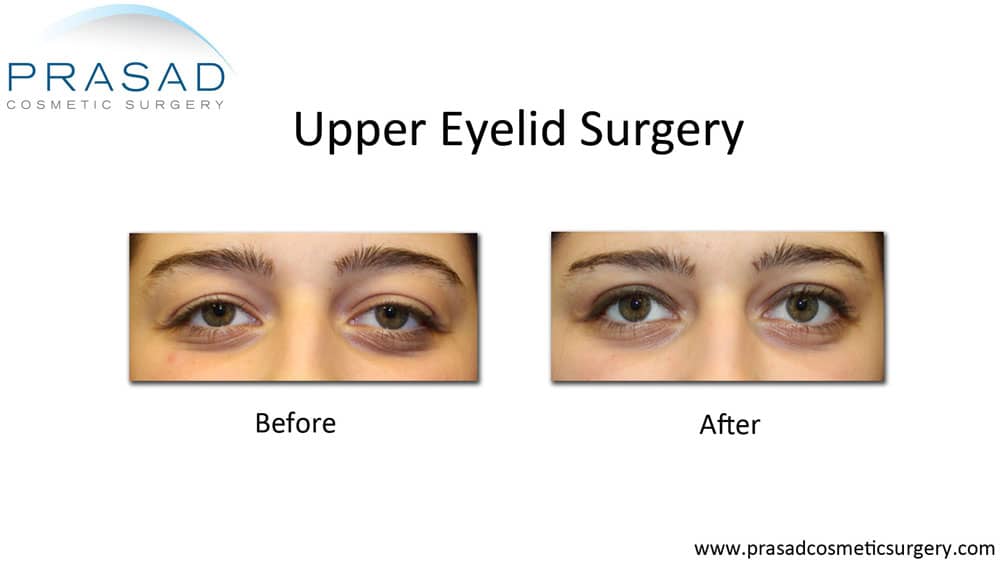The presence of fullness in the upper eyelids can affect both your appearance,and your vision. There are several possible causes of heavy lidded eyes. Solutions to these causes frequently necessitate specialized procedures that are not typically performed by general plastic or cosmetic surgeons. As an oculoplastic surgeon, I’ve specialized in common cosmetic eyelid surgeries like hooded eyes, under eye bag surgery, as well as specialized procedures like eyelid ptosis surgery, surgery for lacrimal gland prolapse, and surgery to correct the effects of Bell’s palsy, or thyroid eye disease.
The presence of extra skin and fat is the most common cause of heavy lidded eyes. Eyelid skin can stretch with age, resulting in upper eyelid fullness known as dermatochalasis. Fat that is normally located in compartments around the eyes can push forward to cause puffiness, as well as fullness that extends the entire length of the upper eyelid. Drooping brows can also be associated with heavy lidded eyes. Upper eyelid blepharoplasty is a procedure that I routinely perform to treat fullness in the upper eyelids caused by excess skin and fat.
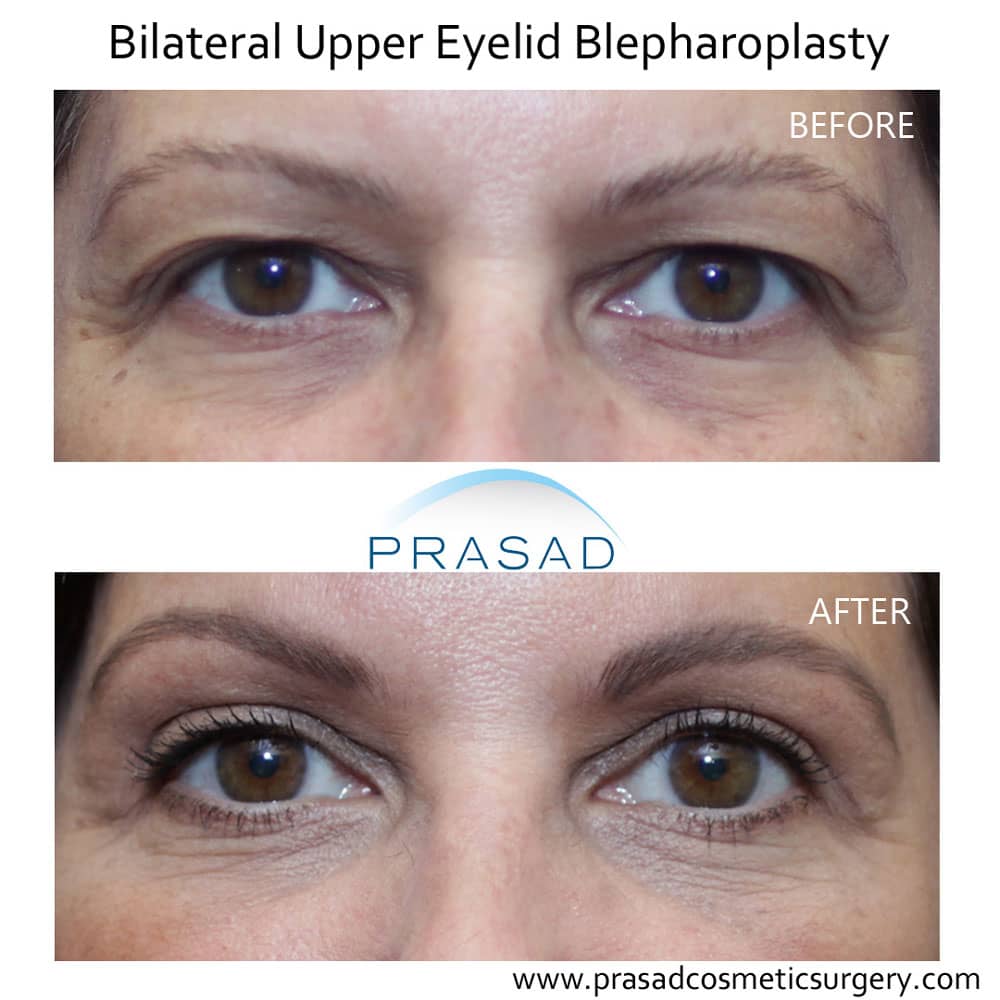
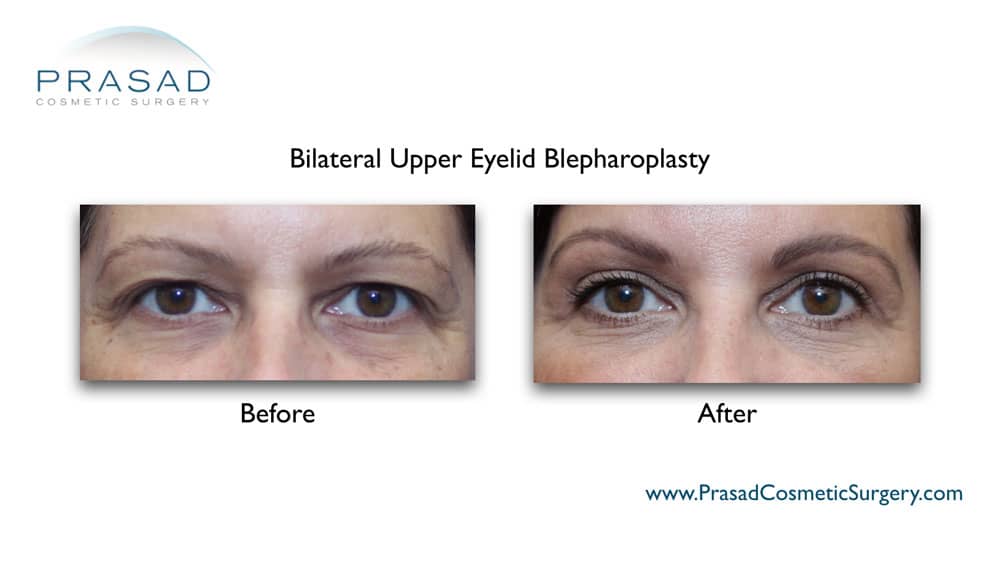
Upper eyelid blepharoplasty is a popular procedure that can significantly improve the appearance of your eyes. Unfortunately, many doctors who perform upper eyelid blepharoplasty are not as familiar with the anatomy of the eyes. This increases the risk of complications such as having too much skin removed, which exposes the eyes, as well as undesirable scars, and unsatisfactory aesthetic results.
As a specialist who performs corrective procedures for both upper and lower blepharoplasty complications, I can attest to the importance of having a high level of expertise in eyelid surgery. My approach to upper eyelid surgery is to reveal the true shape of the eyes to help you look refreshed, while retaining the true character of your eyes and face.
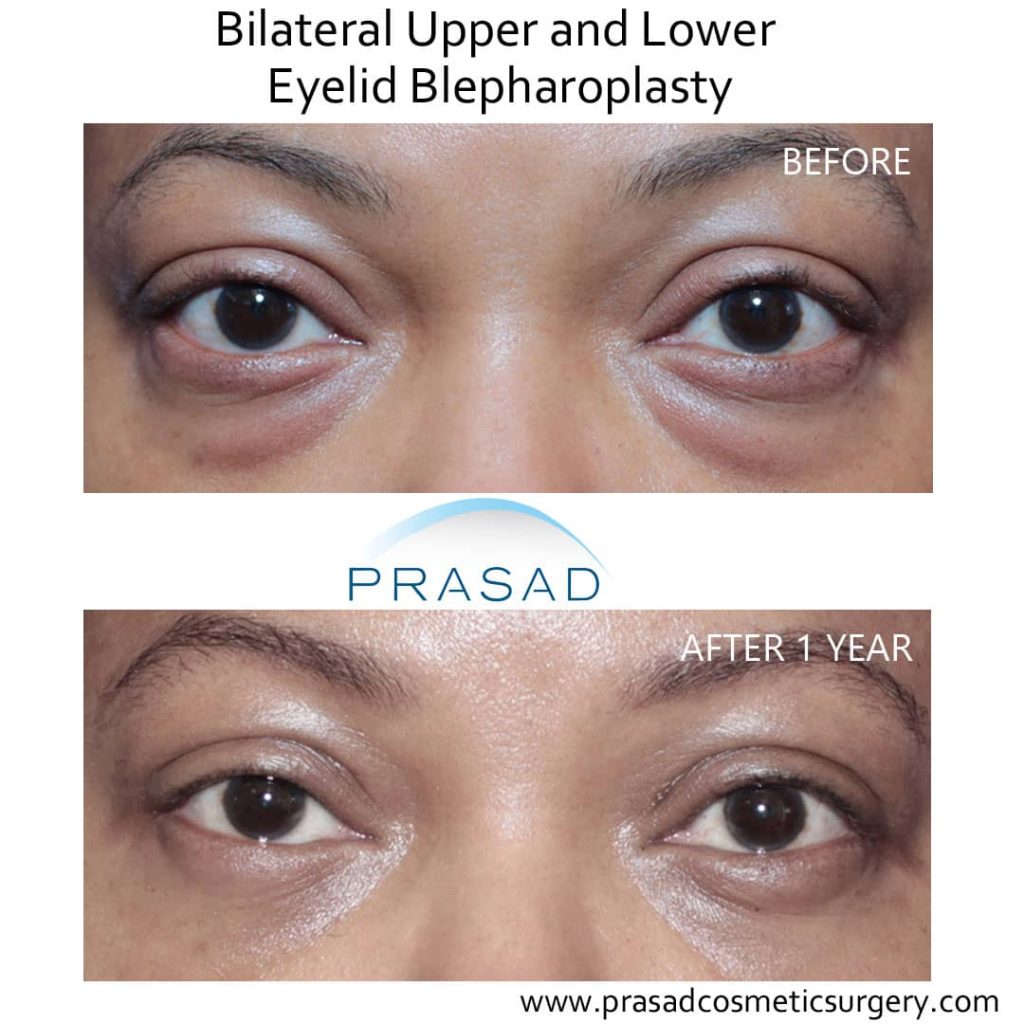
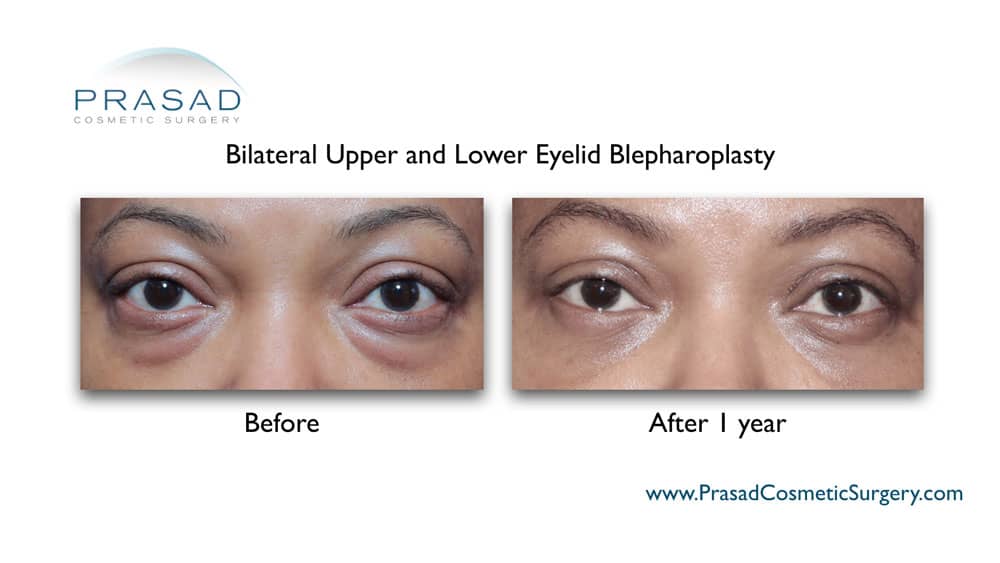
Lacrimal gland prolapse is another possible cause of fullness above the upper eyelids. The lacrimal gland is the gland responsible for producing tears for eye lubrication. The location of this gland is critical during eyelid surgery. Upper eyelid fullness can be caused in part by lacrimal gland prolapse. This means that the lacrimal gland, which is normally found behind the bone, descends and prolapses. If there are no other bulges caused by fat or fullness from brow droop, lacrimal gland prolapse can appear as a mass. This gland should be repositioned and preserved during surgery using a technique known as lacrimal gland resuspension.
As the specialty of oculofacial surgery includes training specifically in the lacrimal system, lacrimal gland resuspension is an integral part of a specialty focused on eyelid surgery. Non-eyelid specialists, such as general plastic surgeons, have sometimes removed the prolapsed gland in the same way that fat is removed. This action results in a decrease in total tear production, which has eye health implications such as dry eye syndrome.
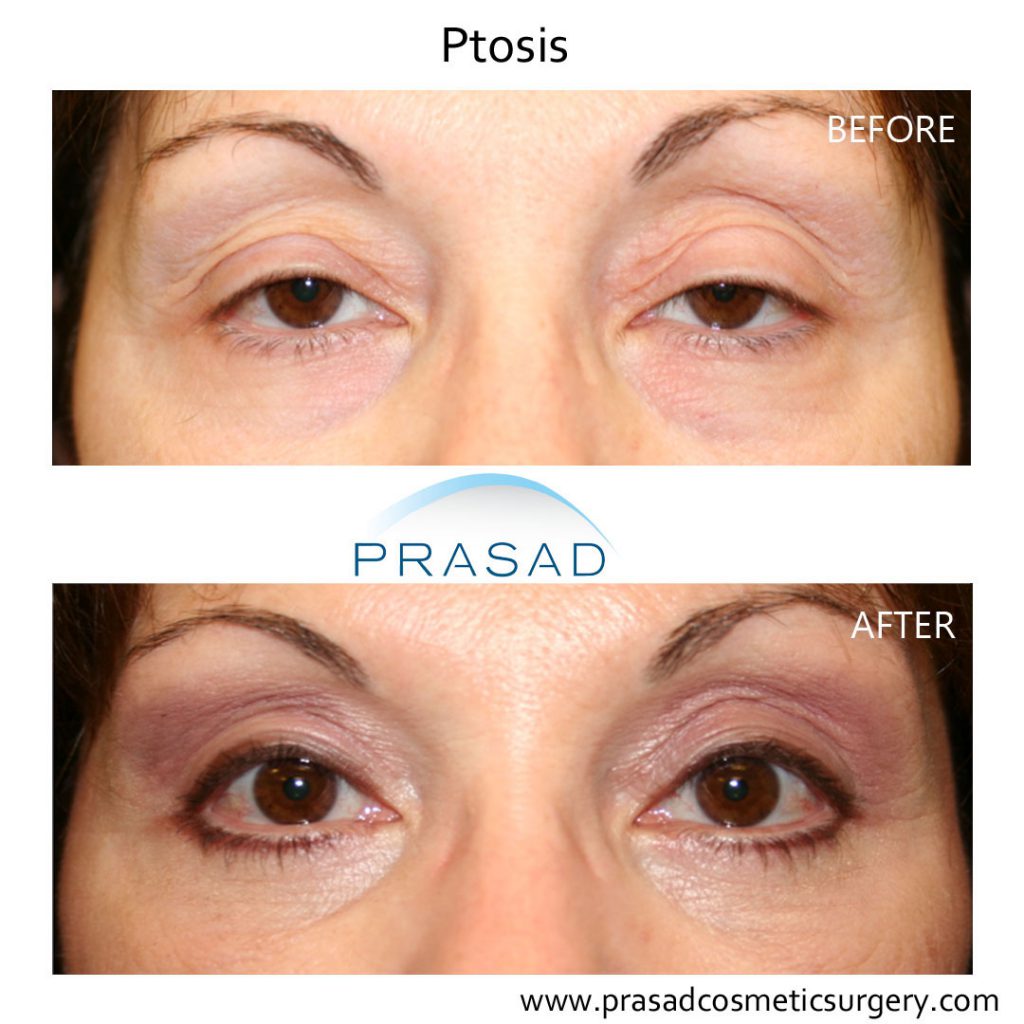
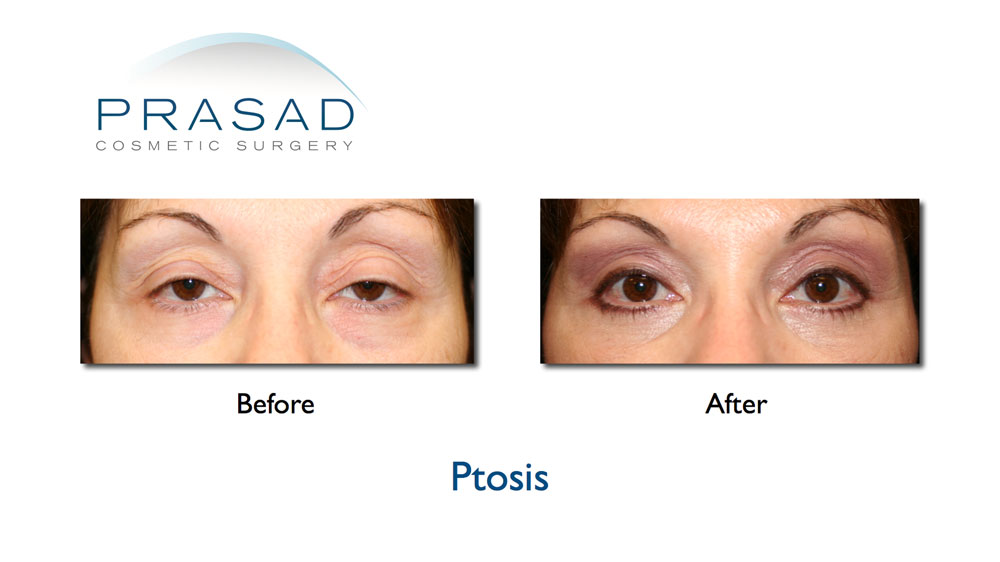
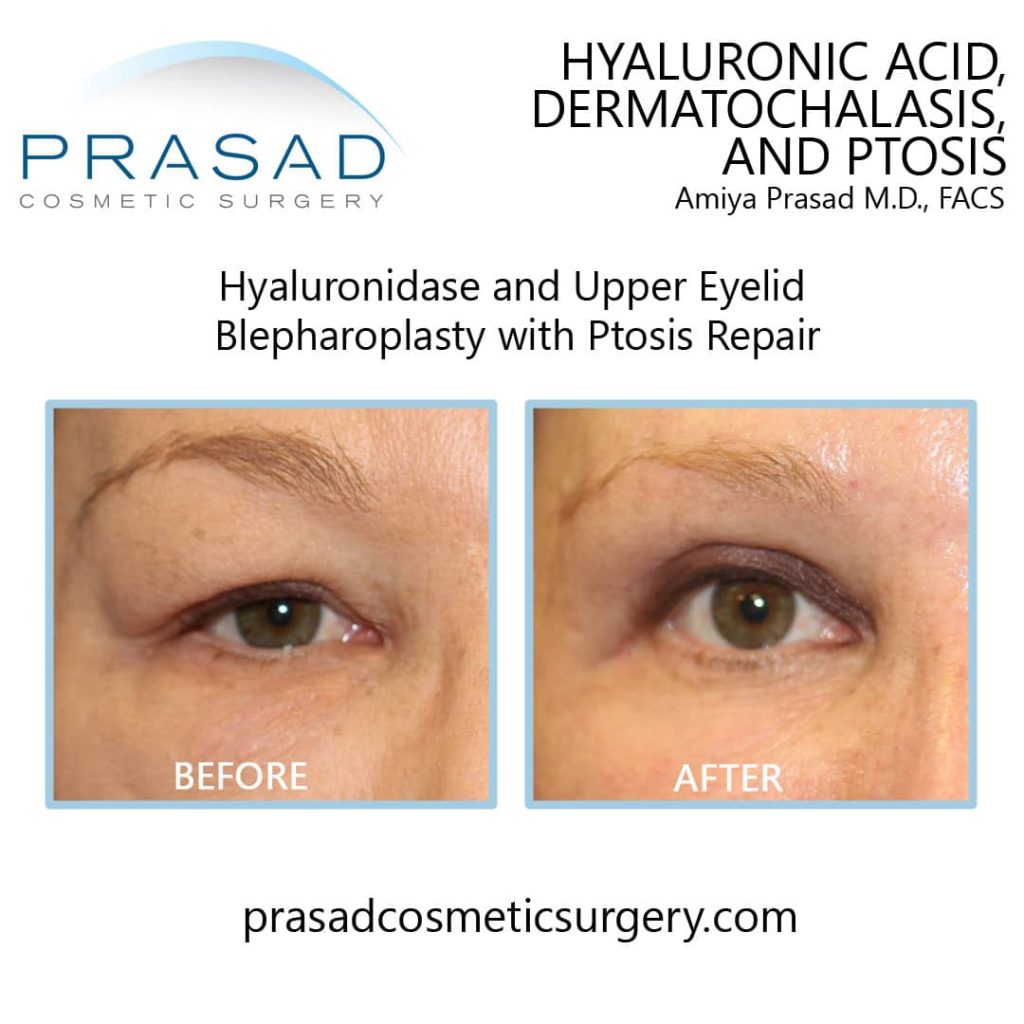
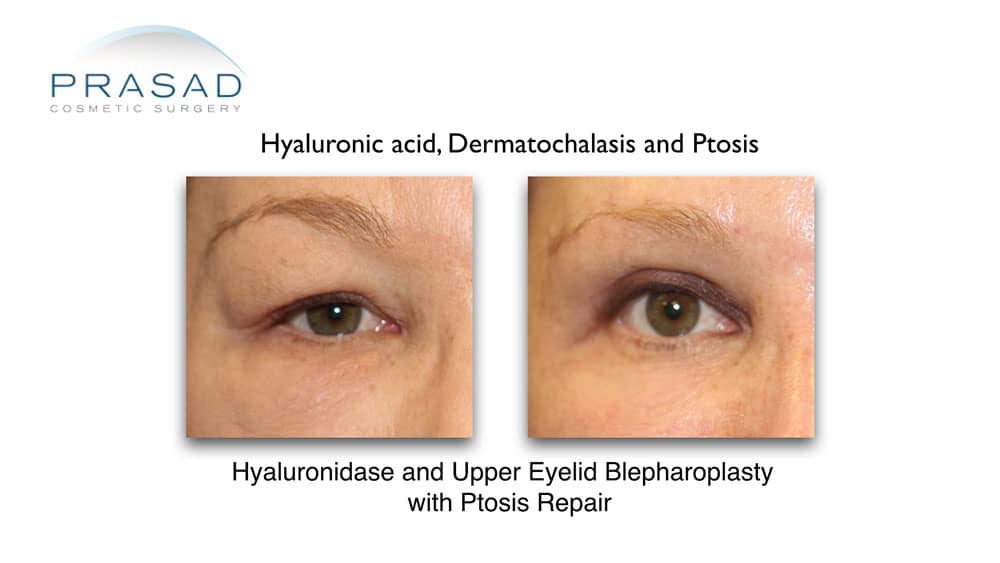
The position of the brows could be an indirect cause of fullness in the upper eyelids. Eyebrow ptosis refers to drooping of the brow. A non-surgical treatment with botulinum toxin can be considered in many cases of brow ptosis. The Botox brow lift (view Brow Lift Before and After) procedure involves relaxing the depressor muscle group that pulls the brows downward, including the corrugator, procerus, and orbicularis oculi muscles. By relaxing these muscles, the frontalis muscle, which lifts the brows, is allowed to work unopposed, raising the brows. Typically, age-related changes cause the brows to descend, necessitating physical repositioning and reshaping. Different types of brow lift surgery can be very effective depending on the individual situation.
Eyelid surgery, lacrimal system surgery, and brow lifting surgeries are all routinely performed in my practice under local anesthesia, with LITE IV sedation. During surgery, our patients are comfortable, and recover without the risks and side effects of general anesthesia. My patients usually return to work about a week after eyelid surgery.
